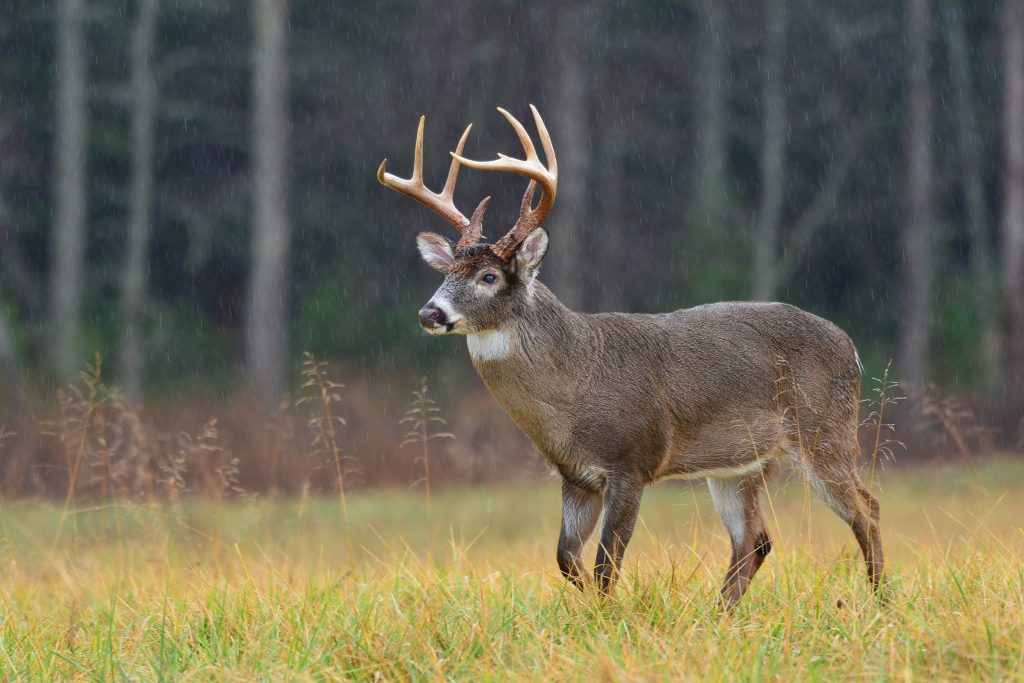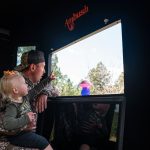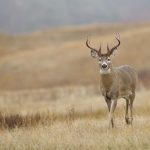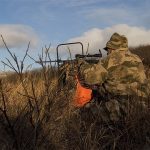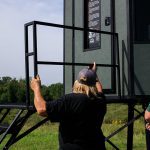10 Deer Hunting Myths Debunked!
Ah, the dearly beloved hunting myth. There’s nothing like the spin of an old yarn to really help impressionable, new hunters getting into deer hunting along while learning the ways of the whitetail.
Here are our top 10 favorite deer hunting myths that have surely caused many a hunter to miss opportunities to fill the freezer.
Deer Hunting Myth 1: Big Bucks Only Move at Dawn and Dusk
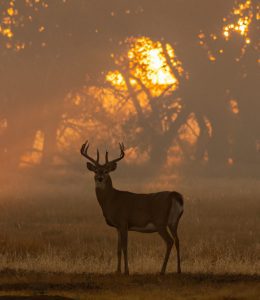 Anytime someone says “only’ or “always,” that should be an immediate red flag. Most of us know that deer are crepuscular animals. By definition, that means the majority of their activity is in the morning and night. But is that the whole story? If you listened to the tales from hunting camps of yesteryear, then the answer is probably, “yes.” After all, it is a good reason to go back to camp in the afternoon and nap!
Anytime someone says “only’ or “always,” that should be an immediate red flag. Most of us know that deer are crepuscular animals. By definition, that means the majority of their activity is in the morning and night. But is that the whole story? If you listened to the tales from hunting camps of yesteryear, then the answer is probably, “yes.” After all, it is a good reason to go back to camp in the afternoon and nap!
Deer do bed down, and deer movement definitely slows, but you can still shoot a nice midday buck. The secret is in changing up your stand sets. Hunting bedding areas, travel corridors, or water sources will give you a chance at a good whitetail deer when things have seemed to have come to a halt in the afternoon.
Deer Hunting Myth 2: Windy Days Mean You Should Just Stay Home
This is what we’d like to think because knowing means pressure to get out in the field during weather we’d rather sit home and watch hunting shows in.
However, Penn State University ran a three-year study utilizing radio telemetry and weather data. The research showed that deer indeed move more on windy days than calm days.
Deer Hunting Myth 3: A Big Rub Means a Big Buck
Sometimes, a large rub can mean a big buck made it. While this thinking is certainly logical, it is not always 100% accurate. While large mature bucks might get a larger rub started, multiple smaller bucks may rub on the same tree, enlarging the rub.
The personality of deer can also come into play. A larger deer may be just as likely to rub on smaller trees as bigger ones, and a smaller but more aggressive buck may rub on a larger tree.
While a big buck can certainly thrash the largest of trees, there are too many variables to say with total confidence a mature buck made it.
Deer Hunting Myth 4: Dominant Bucks Breed the Does
Nope! According to the National Deer Association, bucks of all age classes will breed does. Dominant whitetail bucks do not keep harems like elk, where the bull in charge breeds the cows.
Mature bucks seek out receptive does and will repeatedly breed the same doe during their estrous period. Then they will move on to other does. It is also not uncommon for various older and younger bucks to breed the same doe, leading to multiple paternity.
Deer Hunting Myth 5: Old Bucks Have Large Ranges
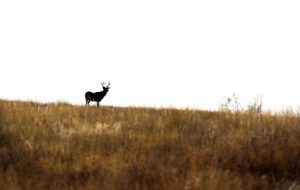 It is more likely that the opposite is true. As bucks age, they may become more homebody-ish, choosing to stay in core areas that they know and feel safe in. Most research seems to point at mature bucks reducing their home range as they age. Especially once they get beyond peak breeding age.
It is more likely that the opposite is true. As bucks age, they may become more homebody-ish, choosing to stay in core areas that they know and feel safe in. Most research seems to point at mature bucks reducing their home range as they age. Especially once they get beyond peak breeding age.
North American Whitetail had this to say about it:
On average, mature bucks tend to have smaller core areas than younger bucks. The 2 1/2-year-olds travel widely, having ranges much larger than even 3 1/2-year-olds.
Many bucks 5 1/2 or older have tiny core areas in which they’ve learned they can feel secure. These deer are big enough to take over the best of the best bits of security cover from other bucks if they so desire.
Deer Hunting Myth 6: Moon Phase Impacts Deer Movement
Deer hunters, especially old-school deer hunters, aren’t going to want to hear this. But research shows that the moon phase has absolutely zero to do with deer movement.
PSU Wildlife Biologist Jeannine Fleegle echoes this statement by saying, “We’ve said it before, and we’ll say it again – the full moon has no effect on deer movements.”
Even Dr. Grant Woods of Growing Deer TV, whose earlier research in the 1990s pointed to 72% accurate predictability of deer activity, has stated he sees no link between lunar cycles and deer/elk movement.
So, what changed? Radio collars and telemetry. With improved technology and the ability to track deer 24/7, radio collars give insight into the behaviors that we couldn’t see before.
Deer Hunting Myth 7: Hunting Pressure Will Get Deer Moving
Deer will move when there is hunting pressure, but maybe not necessarily in the way that is an advantage to you. Numerous studies show that if deer aren’t holding tight in super-thick cover, any deer movement that may occur will probably not be in the vicinity of where hunters are. What’s more, is that they may be moving during the time of day when you can’t hunt them – at night.
Deer Hunting Myth 8: Your Chances Increase the More Acreage You Hunt
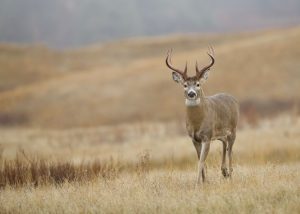
Don’t get us wrong, we love wide-open spaces. But think about the times you’ve hunted through a huge chunk of seemingly prime whitetail habitat, only to find deer didn’t even use it. It seems a shame, but there are certainly large tracts of land that simply don’t see much deer activity.
On the flip side, there may be a 100-acre area that has stellar deer movement along with great deer numbers and distribution. You don’t need thousands of acres of land to kill a whitetail. In fact, you can be repeatedly successful on 20 acres or less. It’s really about the quality of the parcels you’re hunting and what they have to offer. Is there an irresistible or different food source that isn’t available on other nearby properties? Is there great edge habitat, travel corridors, or good thick cover for a buck to sack-out in?
Attributes that attract deer to a certain size property are a much better estimator than the actual size of the acreage.
Deer Hunting Myth 9: If Another Hunter Passes Through Your Set-Up, It’s Ruined for the Day
I’m sure a lot of us, at one time or another, held this belief and had a major freak-out because someone came cruising through our spot. That, or they were hunting close-by in the vicinity of our stand.
But guess what? There’s no reason to sweat it. We’ve observed trail cam pics and watched everyone from other hunters to people on horseback come through areas only to have deer trace the exact same steps twenty minutes later. You just never know exactly where they might be coming from.
Some deer may get bumped around, but hold tight to the thick cover that is nearby. Other deer may have been a half-mile away or more and have no clue that another presence was in the area. They just happened to pop out at the time that they did.
Obviously, you always need to focus on safety while deer hunting but don’t give up a good spot just because someone may have been hunting in close proximity or traipsed through the middle of your set.
Deer Hunting Myth 10: Bucks Rub Trees Just to Take off the Velvet
Bucks definitely do rub trees to start taking the summer velvet off their antlers. However, that isn’t the only reason they rub! Impressive clusters of rubs and rub lines throughout deer country are made to mark territory, show dominance, and bully other bucks around.
As a visual and chemical communication tool, rubs may have a social role to play. Deer researcher, Karl Miller, hypothesizes that signpost rubs made by mature bucks help maintain social harmony in whitetail populations. According to Miller, it is thought the primer pheromones deposited on the rubs help synchronize reproductive cycles, bring adult does into estrus early, and suppress the aggressiveness and sex drive of young bucks.

